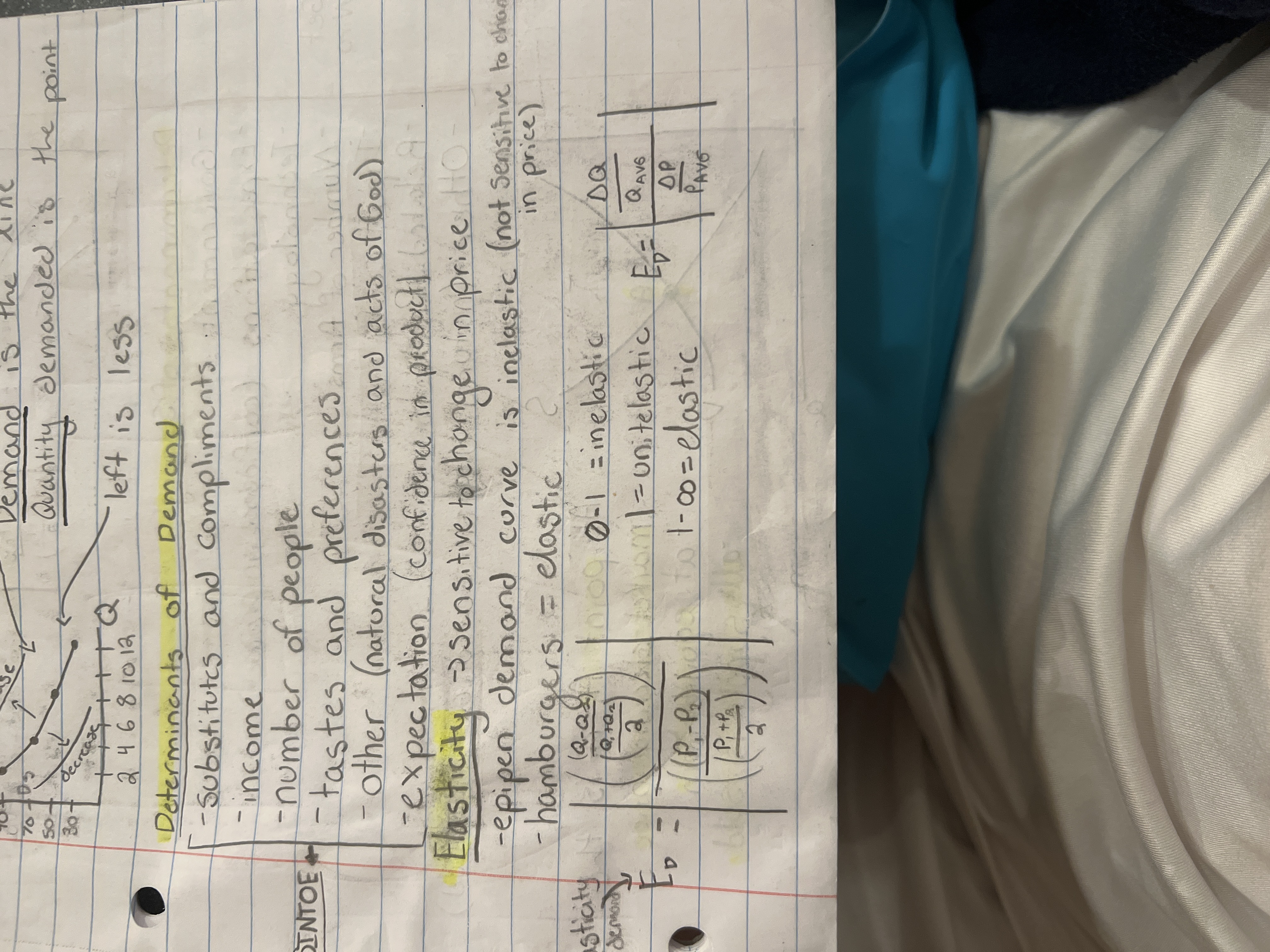AP Economics- Supply and Demand
1/14
Earn XP
Description and Tags
Name | Mastery | Learn | Test | Matching | Spaced |
|---|
No study sessions yet.
15 Terms
Demand
the quantity of a good or service that consumers are willing and able to buy at any given price
Law of Demand
As the price decrease, the quantity increases
Determinants of Demand
SINTOE
S- substitutes and compliments
I- income
N- number of people
T- tastes and preferences
O- other
E- expectation
Elasticity
sensitive to change in price
Elasticity of demand formula

Supply
the quantity of a good or service that producers are willing and able to make at any given price
Law of Supply
As the price increases, the quantity increases
Determinants of Supply
GET NIRO
G-governmnet
E-expectations
T- technology
N- number of firms
I- input costs
R- related products
O-other
Expectations
confidence in product
Market Clearing Price
The price at which the quantity demanded equals the quantity supplied in a market.
At equilibrium where all supply is sold.
Price celing
A government-imposed limit on the maximum price that can be charged for a particular good or service, aiming to make it more affordable for consumers.
Shortage
A situation where the quantity demanded for a particular good or service exceeds the quantity supplied, resulting in a lack of availability (shortage).
(Below the equillibrium point)
Price Floor
A government-imposed minimum price set above the equilibrium price in a market. It leads to excess supply and creates a surplus.
surplus
When the quantity supplied exceeds the quantity demanded, it leads to a surplus. Surplus occurs when there is an excess supply of a product in the market.
(Above the equilibrium point)
Practice Question: US Wheat prices are expected to rise today in the wake of the Agriculture Department’s suprise offer to subsidize the sale of three million metric tons of US wheat to the Soviet Union. How does the SD curve shift and why?
The Supply curve shifts left because of the determinant of government (there is less wheat availible to be supplied to the consumers)